Abstract
Two duck farms in Hong Kong were examined monthly for 1 year for the occurrence and persistence of influenza viruses within the duck communities. The predominant virus in one community was H3N2, a virus antigenically related to the pandemic Hong Kong strain. This virus was isolated monthly throughout the year from feces or pond water or both, indicating a cycle of waterborne transmission. Viruses of the same antigenic combination were isolated 1 and 2 years after the last sampling occasion, implying persistence in the community. Infection was asymptomatic. Maintenance of virus appeared to be dependent upon the continual introduction of ducklings susceptible to infection onto virus-contaminated water; the feces of ducks 70 to 80 days old were generally free of detectable virus despite the exposure of the ducks to virus in pond water. In the second community, in which ducklings were not introduced after the initial sampling, the prevailing viruses, H7N1 and H7N2, also present asymptomatically, ceased to be detected once the ducks were 70 to 80 days old. The normal practice of raising ducks of different ages on the same farm, wherein the water supplies are shared, as typified by the first community, appears to be instrumental in maintaining a large reservoir of influenza viruses in the duck population of southern China.
Full text
PDF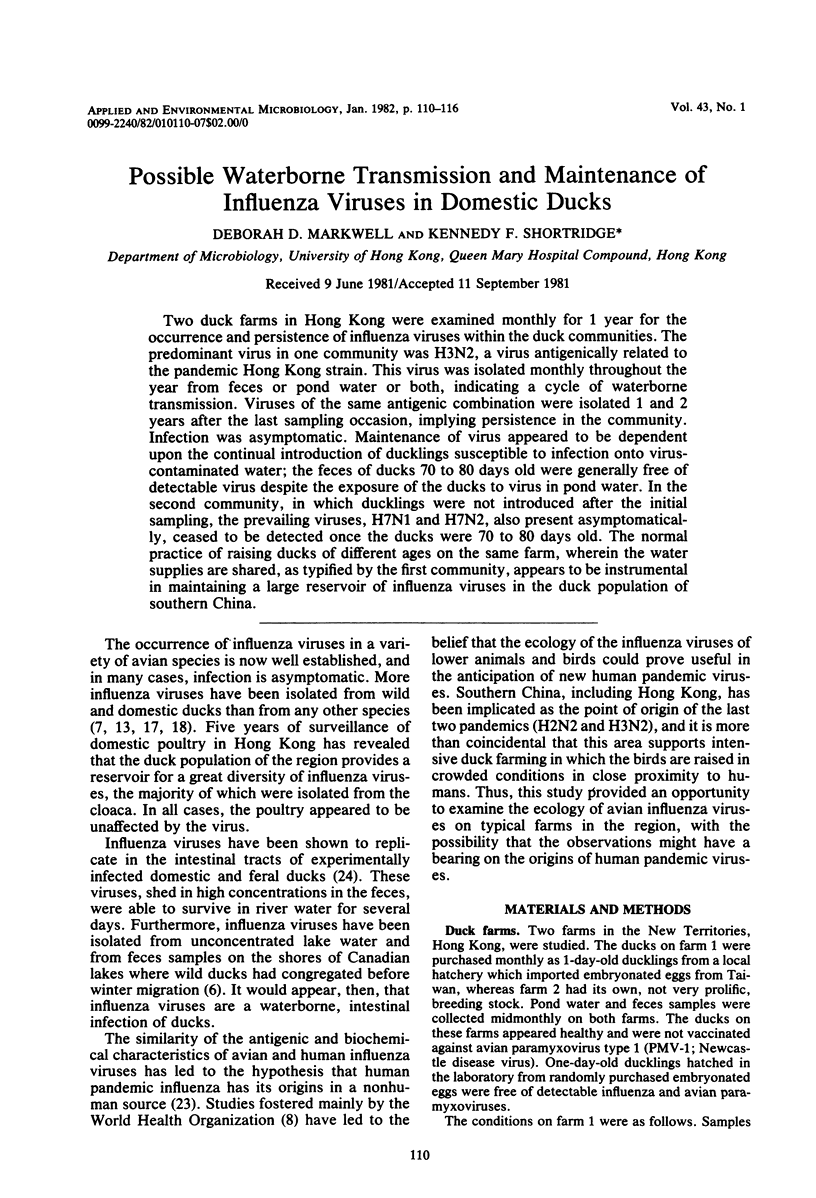
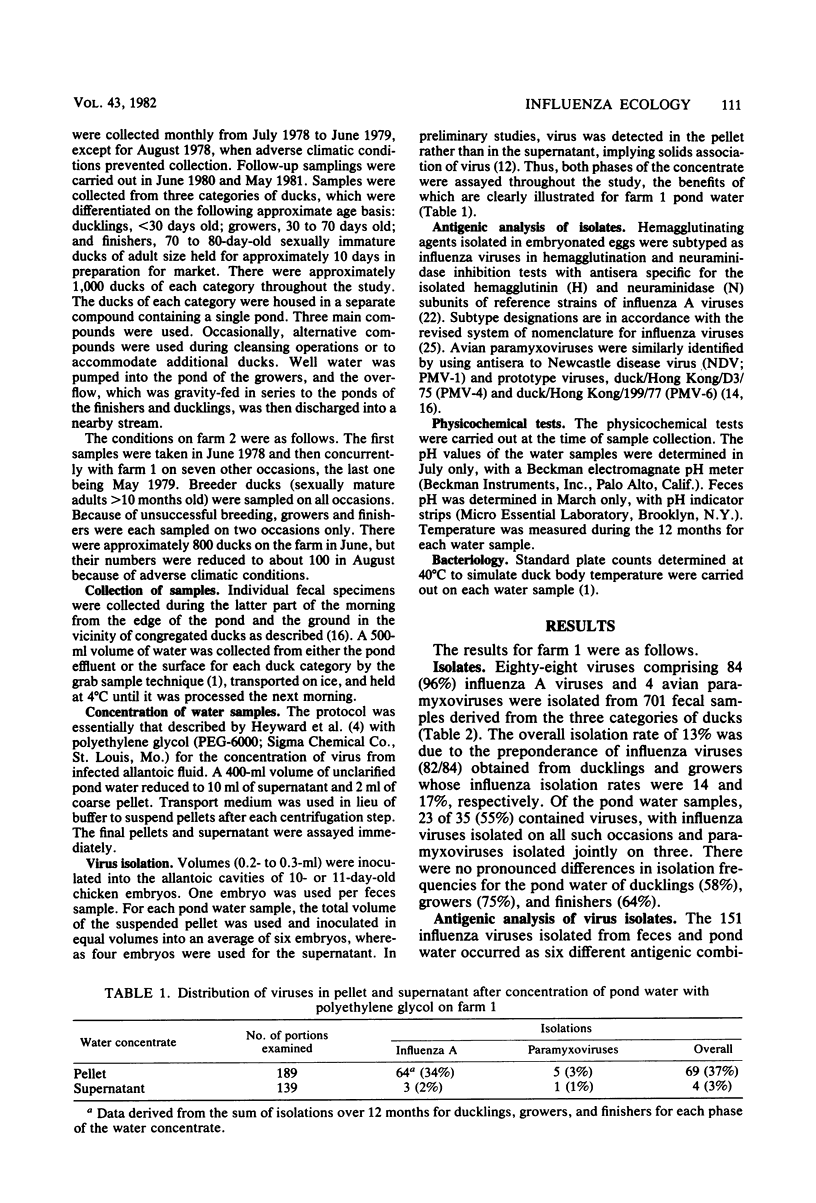
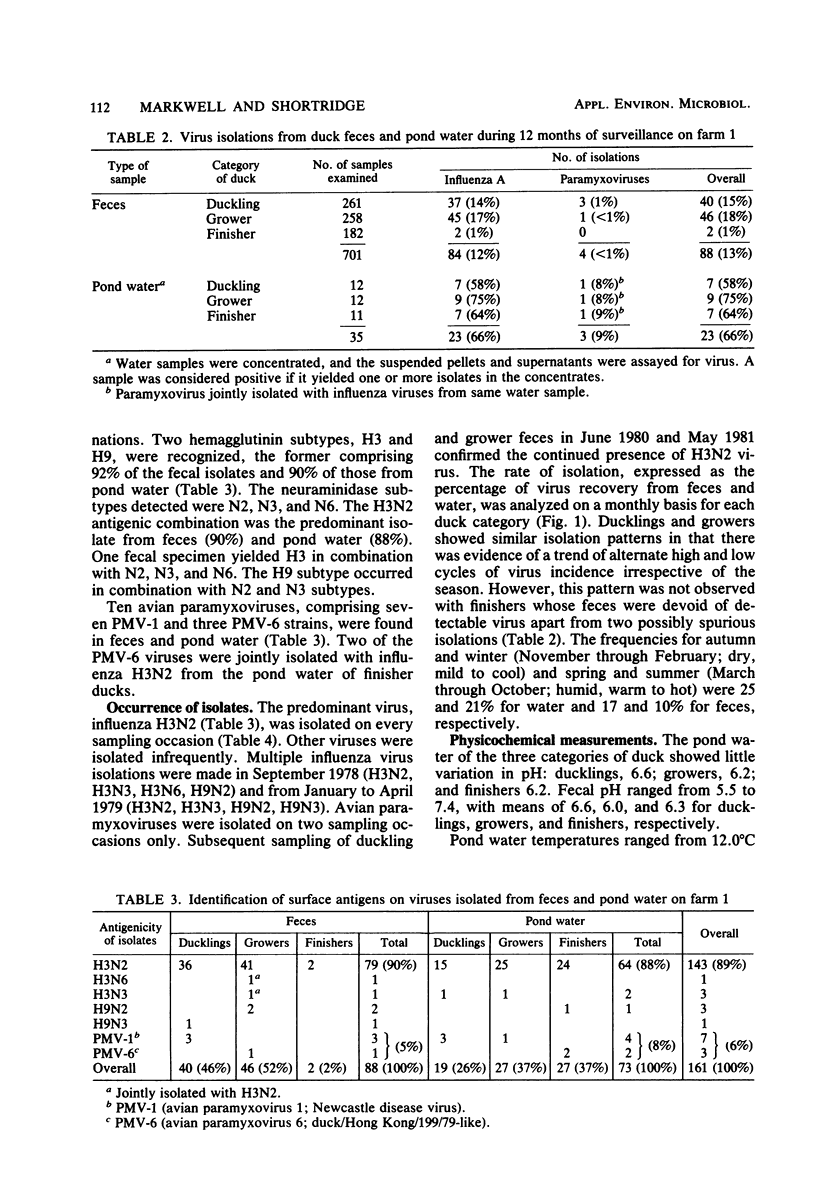
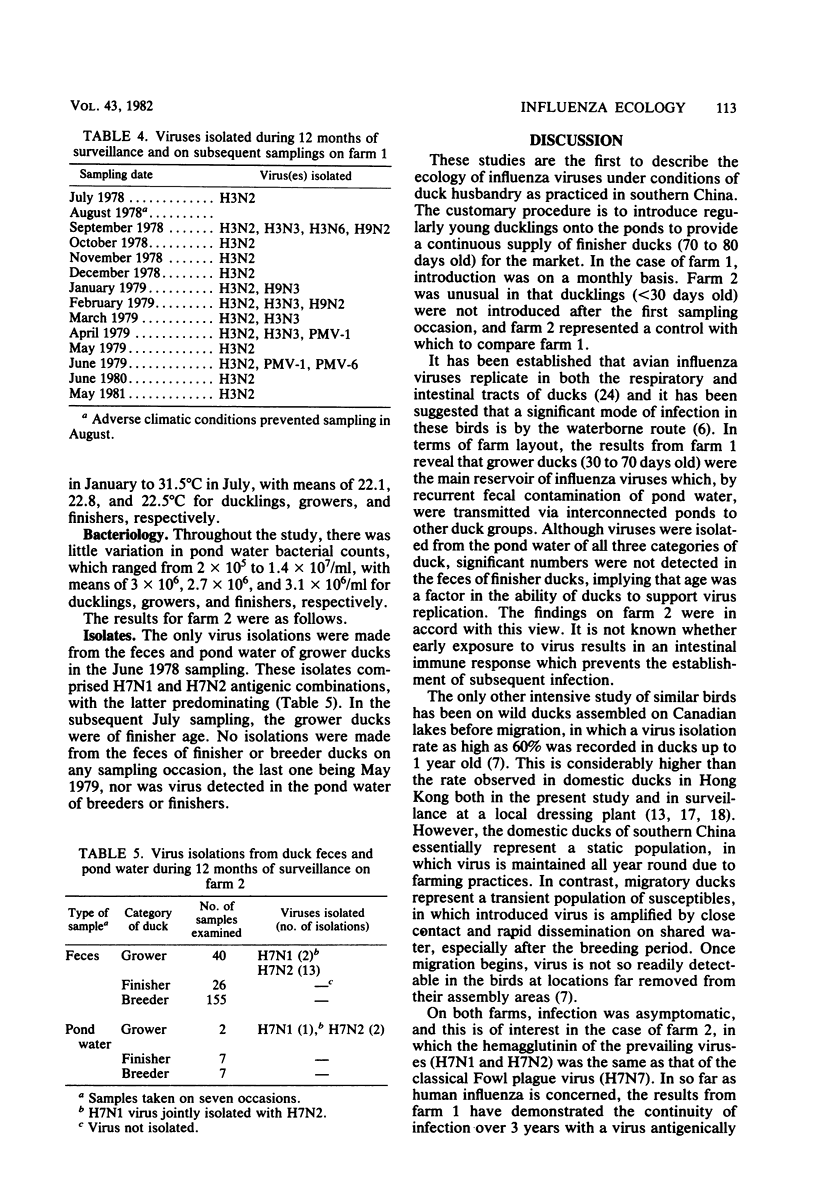
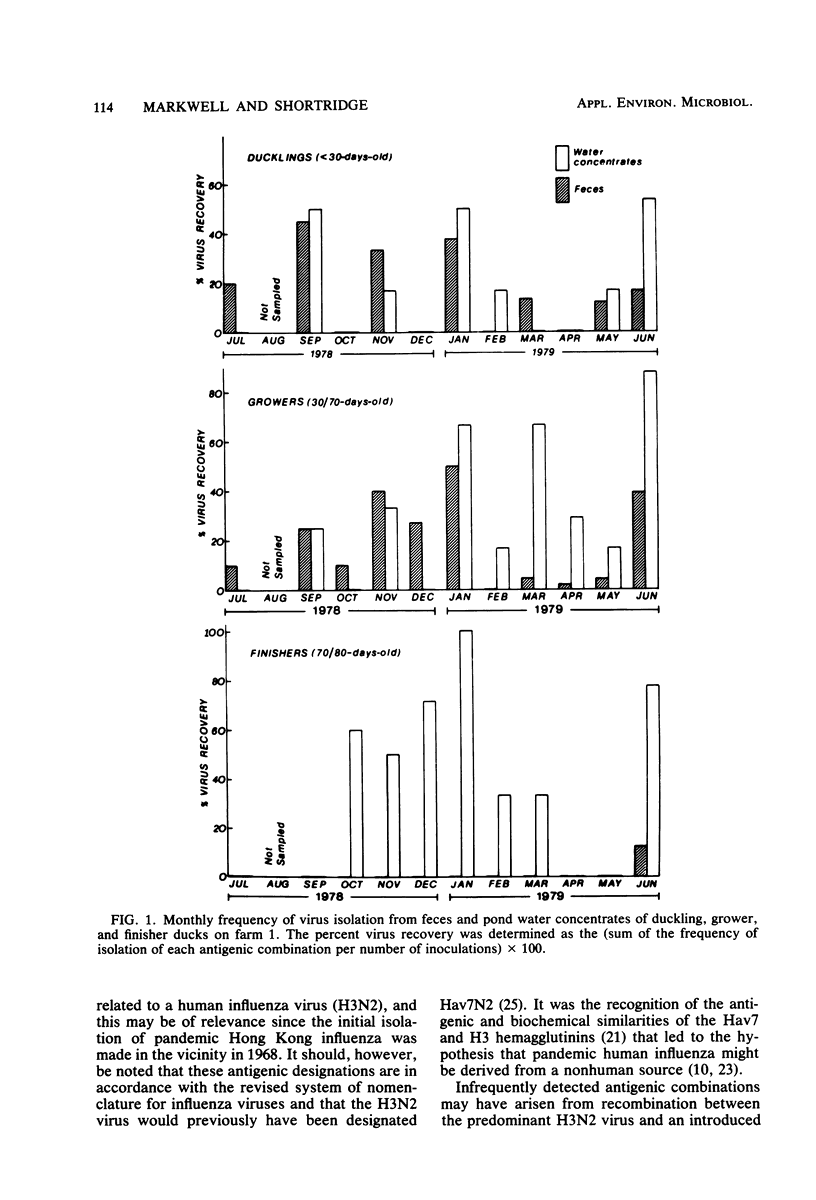
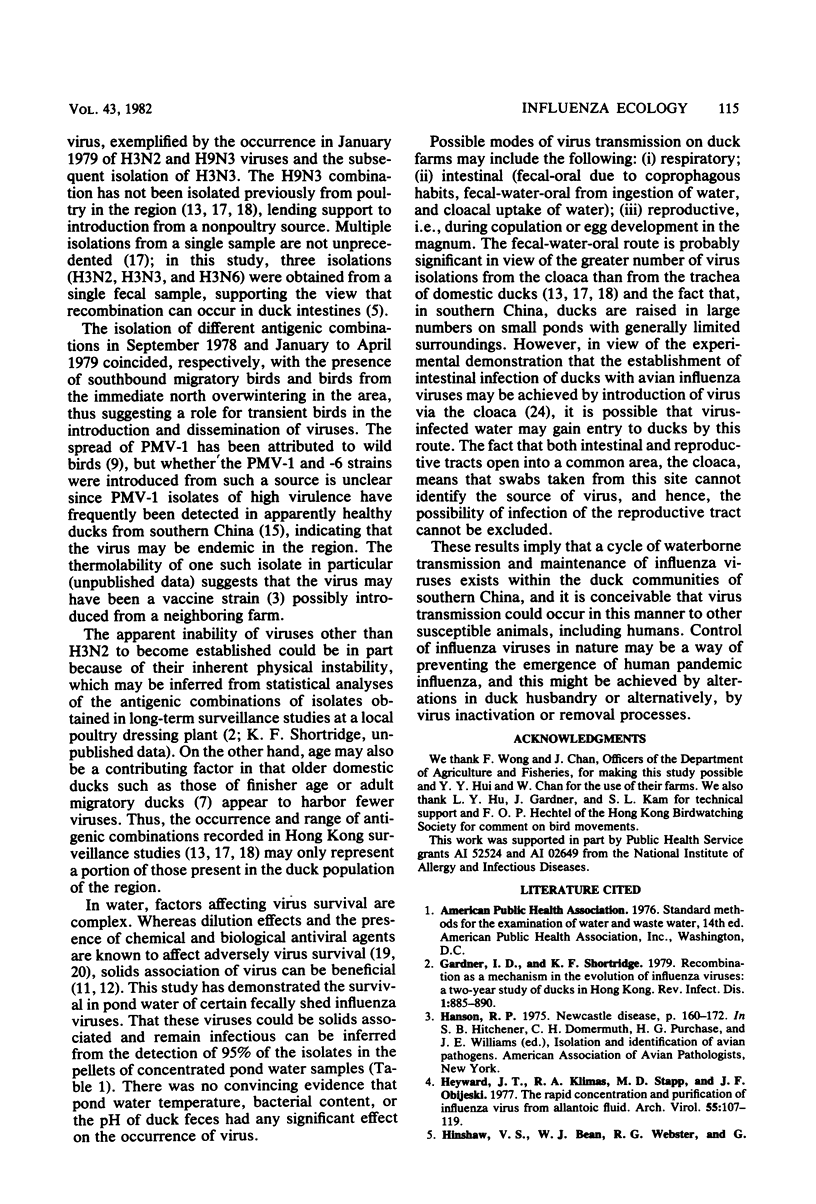
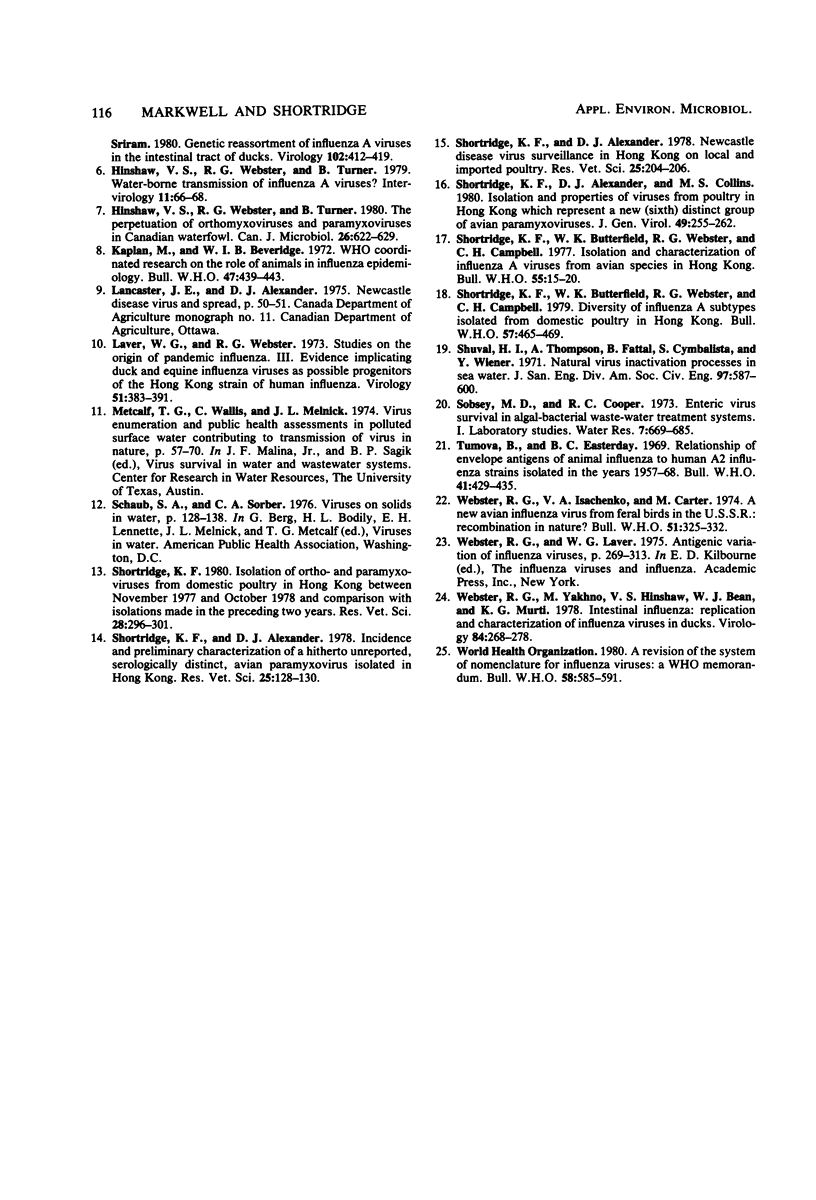
Selected References
These references are in PubMed. This may not be the complete list of references from this article.
- Gardner I. D., Shortridge K. F. Recombination as a mechanism in the evolution of influenza viruses: a two-year study of ducks in Hong Kong. Rev Infect Dis. 1979 Sep-Oct;1(5):885–890. doi: 10.1093/clinids/1.5.885. [DOI] [PubMed] [Google Scholar]
- Heyward J. T., Klimas R. A., Stapp M. D., Obijeski J. F. The rapid concentration and purification of influenza virus from allantoic fluid. Arch Virol. 1977;55(1-2):107–119. doi: 10.1007/BF01314484. [DOI] [PubMed] [Google Scholar]
- Hinshaw V. S., Bean W. J., Webster R. G., Sriram G. Genetic reassortment of influenza A viruses in the intestinal tract of ducks. Virology. 1980 Apr 30;102(2):412–419. doi: 10.1016/0042-6822(80)90108-7. [DOI] [PubMed] [Google Scholar]
- Hinshaw V. S., Webster R. G., Turner B. The perpetuation of orthomyxoviruses and paramyxoviruses in Canadian waterfowl. Can J Microbiol. 1980 May;26(5):622–629. doi: 10.1139/m80-108. [DOI] [PubMed] [Google Scholar]
- Kaplan M., Beveridge W. I. WHO coordinated research on the role of animals in influenza epidemiology: introduction. Bull World Health Organ. 1972;47(4):439–448. [PMC free article] [PubMed] [Google Scholar]
- Laver W. G., Webster R. G. Studies on the origin of pandemic influenza. 3. Evidence implicating duck and equine influenza viruses as possible progenitors of the Hong Kong strain of human influenza. Virology. 1973 Feb;51(2):383–391. doi: 10.1016/0042-6822(73)90437-6. [DOI] [PubMed] [Google Scholar]
- Shortridge K. F., Alexander D. J., Collins M. S. Isolation and properties of viruses from poultry in Hong Kong which represent a new (sixth) distinct group of avian paramyxoviruses. J Gen Virol. 1980 Aug;49(2):255–262. doi: 10.1099/0022-1317-49-2-255. [DOI] [PubMed] [Google Scholar]
- Shortridge K. F., Alexander D. J. Incidence and preliminary characterisation of a hitherto unreported, serologically distinct, avian paramyxovirus isolated in Hong Kong. Res Vet Sci. 1978 Jul;25(1):128–130. [PubMed] [Google Scholar]
- Shortridge K. F., Alexander D. J. Newcastle disease virus surveillance in Hong Kong on local and imported poultry. Res Vet Sci. 1978 Sep;25(2):204–206. [PubMed] [Google Scholar]
- Shortridge K. F., Butterfield W. K., Webster R. G., Campbell C. H. Diversity of influenza A virus subtypes isolated from domestic poultry in Hong Kong. Bull World Health Organ. 1979;57(3):465–469. [PMC free article] [PubMed] [Google Scholar]
- Shortridge K. F., Butterfield W. K., Webster R. G., Campbell C. H. Isolation and characterization of influenza A viruses from avian species in Hong Kong. Bull World Health Organ. 1977;55(1):15–20. [PMC free article] [PubMed] [Google Scholar]
- Shortridge K. F. Isolation of ortho- and paramyxoviruses from domestic poultry in Hong Kong between November 1977 and October 1978 and comparison with isolations made in the preceding two years. Res Vet Sci. 1980 May;28(3):296–301. [PubMed] [Google Scholar]
- Tumova B., Easterday B. C. Relationship of envelope antigens of animal influenza viruses to human A2 influenza strains isolated in the years 1957-68. Bull World Health Organ. 1969;41(3):429–435. [PMC free article] [PubMed] [Google Scholar]
- Webster R. G., Isachenko V. A., Carter M. A new avian influenza virus from feral birds in the USSR: recombination in nature? Bull World Health Organ. 1974;51(4):325–332. [PMC free article] [PubMed] [Google Scholar]
- Webster R. G., Yakhno M., Hinshaw V. S., Bean W. J., Murti K. G. Intestinal influenza: replication and characterization of influenza viruses in ducks. Virology. 1978 Feb;84(2):268–278. doi: 10.1016/0042-6822(78)90247-7. [DOI] [PMC free article] [PubMed] [Google Scholar]


